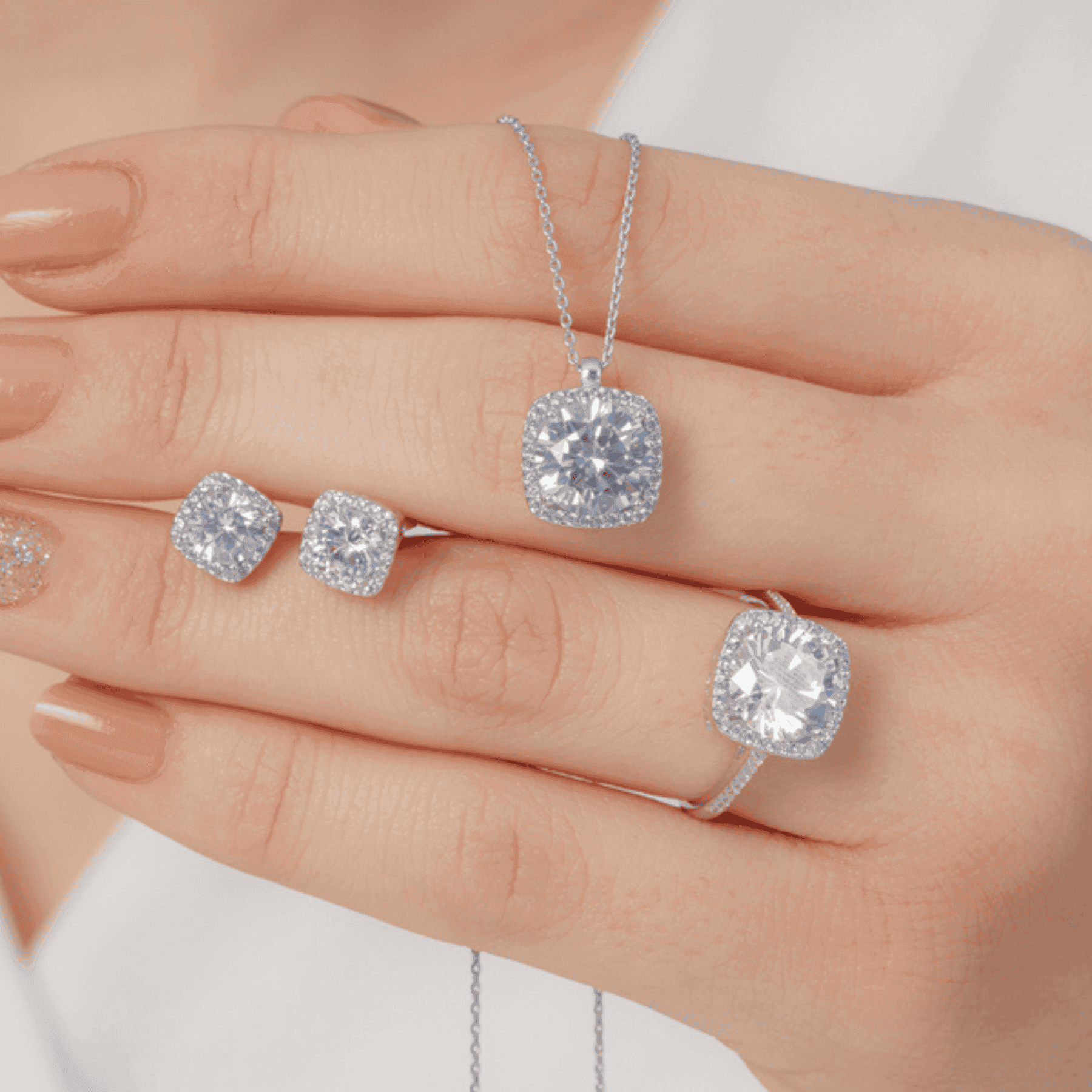
Watches & Jewellery
•03 min read

Choosing the right metal for your jewelry or luxury watch is more than just a stylish choice—it’s an insight into how each material weathers the test of time. Today, we explore the differences between platinum vs white gold durability, diving into how they perform in everyday wear, as well as the care they require to look exceptional through the years.
Understanding the material composition of platinum and white gold helps uncover why they differ in durability. Platinum is a naturally occurring metal, highly dense and pure, typically containing 90-95% platinum in jewelry. This high density contributes to its superior longevity and robust nature. In contrast, white gold is an alloy, expertly blended with other metals such as nickel or palladium. It is then plated with rhodium to achieve that signature bright white finish, which impacts its white gold scratch resistance. The composition differences mean that while platinum jewelry durability is naturally resilient, white gold requires extra care to preserve its aesthetic charm.
The way these metals handle scratches and daily wear is distinct. Platinum, known for its excellent platinum jewelry durability, develops a patina over time. This patina is a soft sheen that many appreciate, and even when scratches appear, the metal displaces rather than being removed. This means that platinum retains its weight and remains structurally robust. White gold, on the other hand, boasts initial scratch resistance thanks to its rhodium plating. However, over time, the plating can wear off, exposing the softer gold alloy. This change diminishes the scratch resistance of white gold, necessitating white gold maintenance tips, such as scheduled re-plating, to keep that sparkling finish intact.
Expert Tip: Platinum retains its weight even after years of wear, making it an ideal choice for owning precious pieces like luxury watches and engagement rings, while white gold may require periodic upkeep to maintain its shine.
Optimizing the look and durability of your jewelry or watch is not just about the initial design; it’s also about proper care over time. Platinum care for jewelry is minimal. Although a polished finish can be restored if you prefer a brighter look, many view the natural patina as a mark of character and history. Conversely, white gold calls for more attention. Regular white gold maintenance tips suggest planning for a rhodium re-plating every 12-18 months. Without this, the metal may slowly lose its luster and even display signs of yellowing over time. This difference highlights the platinum longevity in jewelry, which is often ideal for those who value a low-maintenance yet enduring investment.

The choice between these two metals becomes even more relevant when considering their application. When discussing the durability of platinum watches, the metal’s strength offers a clear edge, making it a preferred choice for intricate luxury watch designs. Its resilience under pressure also makes it suitable for a wide range of styles. When looking at platinum vs white gold for rings, the distinction is equally evident. Platinum rings are prized for their ability to keep shape over extended periods, ideal for engagement and wedding bands. White gold rings, while beautiful and trendy, may require careful handling and regular maintenance to avoid deformation and maintain their brilliant finish.
It is important to balance durability with long-term value when choosing between these metals. White gold is generally more affordable at first, making it an attractive option for those who are budget conscious. However, while it might seem like a smart choice upfront, the need for consistent upkeep and re-plating can add to the long-term expense. Platinum, with its sturdy nature and minimal upkeep requirements, might come with a higher initial price tag but offers better long-term value. Its hypoallergenic quality is another bonus, making it ideal for anyone with sensitive skin. When weighing the platinum vs white gold pros and cons, the enduring beauty and low-maintenance aspect of platinum can prove to be a wise investment in the long run, especially when searching for the best metal for luxury watches and timeless jewelry pieces.
Yes, platinum is denser and purer, which makes it inherently more durable than white gold.

The rhodium plating on white gold can wear off over time, reducing its scratch resistance and bright white finish.
Platinum is ideal for rings due to its ability to maintain shape and resist wear, while white gold may need regular upkeep to stay pristine.
Platinum requires minimal maintenance; it may develop a patina over time, which can be polished if a high shine is preferred.
White gold can be used for luxury watches, but its upkeep requirements might make platinum a more favorable choice for long-term durability.
In summary, both platinum and white gold have distinct benefits when it comes to durability. Platinum is known for its strength, minimal maintenance, and lasting luster, which makes it an excellent choice for heirloom pieces, luxury watches, and rings. White gold, while more budget-friendly initially, demands regular care to maintain its appearance. By understanding these 7 key differences in platinum vs white gold durability, you can make an informed decision that reflects your personal style and long-term aspirations. Embrace the blend of beauty and functionality in your jewelry and luxury watches, and let your metal reflect your unique identity.